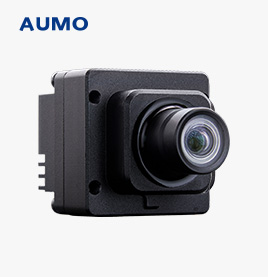




Model
W100
4-channel Autonomous Driving HIL Vehicle Video Injection Card AUSIM

8-channel in-vehicle GMSL2 camera bypass capture card for autonomous driving HIL shunt bypass output

8-channel Autonomous Driving HIL Vehicle Video Injection Card AUSIM GMSL2

AUMO Car camera 8MP GMSL2 OX08B40 without ISP C8201

AUMO Autonomous Driving Assistance Unmanned Vehicle 2M Onboard GMSL Camera Vehicle Level Video Capture
As to the demands of the auto pilot industry, the AD Station W100 can integrate AUMO based on AMD Xilinx FPGA Zynq UltraScale+MPSoC series car mounted camera GMSL acquisition card and video injection card to achieve video data acquisition, video injection, and other functions. Customers can deploy the software simulation to the W100 server to build a more comprehensive hardware in the loop simulation testing environment (AUSIM).
By combining programmable FPGA, powerful data acquisition and processing capabilities, the system achieves synchronous reinjection of multi-channel data acquisition and virtual scene data, and adapts to various mainstream serial and deserialization chips. The system is flexible in adapting to different auto pilot schemes.
CPU:Intel Xeon Gold5317, 12 cores, 24 threads
16GB DDR4, expandable up to 4TB
A total of 7 PCIe 3.0 x16 slots, supporting up to 4 PCIe 3.0 x16 channels
Can add dual GPU cards, such as RTX3090, to achieve high computing power AI computing
Optional AUMO PCIe interface products such as acquisition card A16, injection card S2, S1, etc
Support Linux operating system, using V4L2 framework driver

AD Station W100 is a research and development platform for autonomous vehicle acquisition, calculation, and hardware in the loop simulation testing of HIL. It can be paired with 16 channel in car camera GMSL acquisition card A16, 8 channel in car video injection card S2, and 4 channel in car video injection card S1



System
Linux Ubuntu 20.04
CPU
Intel Xeon Gold5317, 12 cores, 24 threads
Memory
16GB DDR4, expandable up to 4TB
Storage
1TB M.2 NVMe SSD (scalable to more)
Graphics Card
Integrated graphics card (supports dual GPU, such as GTX3090)
PCIe Slots
A total of 7 PCIe 3.0 x16 slots, supporting up to 4 PCIe 3.0 x16 channels
Supports 7 PCIe 3.0 X8 or 4 PCIe 3.0 X16
Support for scalable GPS timing synchronization
Support ECU and other devices to trigger synchronous injection mode
Supports Ethernet PTP timing timestamp with an accuracy of less than 1ms
Support YUV422, RAW12 video formats, equipped with 1TB M.2 NVMe SSD storage
Can mix 16 channel acquisition card A16, 8 channel injection card S2, and 4 channel injection card S1
A16 and S2 can be used to achieve integrated injection and acquisition functions
Can achieve collection and injection of GMSL2 interface
HDMI video injection and GMSL2 injection can be achieved through S1
Dual card S2 can be used in parallel to achieve 16 channel video injection
Can add dual GPU cards, such as RTX3090, to achieve high computing power AI computing
Supports multi-channel 1000BASE-T1 and CAN/CAN-FD communication, meeting various commonly used vehicle interfaces
A solution for the data collection needs of autonomous driving cameras is achieved through the PCIe 3.0x16 int erface, which enables 16 channel c amera video collection and provides PTP timestamp function to ensure the synchronization of 16 channel video data. It is the be st choice for industrial c omputer IPC autonomous driving solutions.

By the PCIe 3.0x16 interface, 8-channel video, 3-channel 1000Base-T1, and 3-channel CAN/CAN-FD data ECUs are injected, and PTP timestamp synchronization function is provided to ensure the synchronization of multi-channel data. It supports industrial computers/standard servers to achieve hardware in the loop simulation of HIL systems.

By the PCIe 3.0x4 interface, 4-channel video injection is achieved, and PTP timestamp synchronization function is provided to ensure the synchronization of multi-channel data. At the same time , 4-channel HDMI video signal input is supported, and industrial c omputer/standard server hardware in the loop simulation HIL system is supported.

Send the onboard camera data to the ECU, and at the same time, send the data to the PC host or server through the PCIE/optical port for real-time data analysis or disk storage

After the camera video is collected, it is dropped and stored to provide data support for subsequent algorithm simulation and restoration.

Retrieve the ac tual data c ollected from the road and feed it back to the ECU to restore the true situation of the road and optimize the algorithm

Simulate the car mounted camera and inject the scene data simulated by the so ftware into the E CU, virtual vehicle roads, and other information.

Adaptive cruise control, lane keeping assist, pre collision braking, automatic parking assist (APA), and automatic valet parking (AVP)

Visual b ased infrared sensor s ac tively monit or the driver's attention and participation status in real-time AI, helping the driver maintain focus.

Real time r apid and ac curate r ecognition o f th e identity, emotions, gestures, and preferences of vehicle occupants to help improve safety and comfort inside the vehicle.

Monitor vehicle battery swapping behavior from multiple perspectives, and upload real-time data to the host for analysis and processing.
